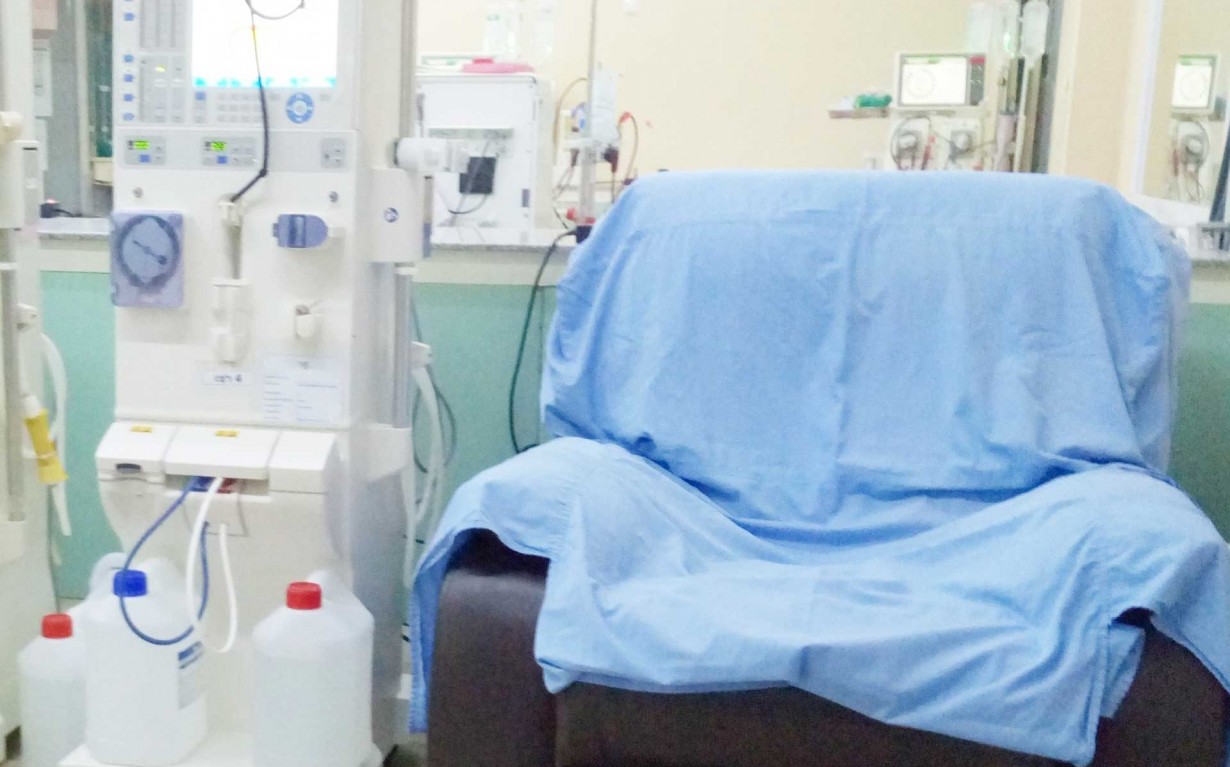What Is Dialysis?
The kidneys are responsible for filtering waste products from the blood. Healthy kidneys work 24 hours a day, seven days a week. When kidneys stop working, dialysis does this job, but it only does some of the work.

Dialysis is a procedure that is a substitute for many of the normal duties of the kidneys. Dialysis can allow individuals to live productive and useful lives, even though their kidneys no longer work properly.
In the United States, there are over 200,000 people who use dialysis techniques on an ongoing basis. Dialysis helps the body by performing the functions of failed kidneys. The kidney has many roles. An essential job of the kidney is to regulate the body’s fluid balance. It does this by adjusting the amount of urine that is excreted on a daily basis. On hot days, the body sweats more. Thus, less water needs to be excreted through the kidneys. On cold days, the body sweats less. Thus, urine output needs to be greater in order to maintain the proper balance within the body. It is the kidney’s job to regulate fluid balance by adjusting urine output.
Another major duty of the kidney is to remove the waste products that the body produces every day. As the body functions, the cells use energy. The operation of the cells produces waste products that must be removed from the body. When they are not removed adequately, they build up in the body. An elevation of waste products, as measured in the blood, is called “azotemia.” When waste products accumulate, they cause a sick feeling throughout the body called “uremia.”
When Do Patients Require Dialysis?
Patients usually require dialysis when the waste products in their body become so high that they start to become sick from them. The level of the waste products usually builds up slowly. Nephrologists measure several blood chemical levels to help decide when dialysis is necessary. The two major blood chemical levels that are measured are the “creatinine level” and the “blood urea nitrogen” (BUN) level. As these two levels rise, they indicate the decreasing ability of the kidneys to cleanse the body of waste products.
Kidney doctors use a urine test to measure the level of kidney function. The patient saves urine in a special container for one full day. The waste products in the urine and in the blood are estimated by measuring the creatinine. By comparing this substance in the blood and urine, the doctor has an accurate idea of how well the kidneys are working. This result is called the creatinine clearance. Usually when the creatinine clearance falls below 10-12 cc/minute, the patient may need dialysis.
The doctor uses other indicators of the patient’s status to decide about the need for dialysis as well. If patientsare experiencing a major inability to rid the body of excess water, or are complaining of problems with the heart, lungs, or stomach, or difficulties with taste or sensation in their legs, dialysis may be indicated even though the creatinine clearance has not fallen to the 10-12 cc/minute level.
What Types of Dialysis Are There?
There are two main types of dialysis: “hemodialysis” and “peritoneal dialysis.” Hemodialysis uses a special type of filter to remove excess waste products and water from the body. Peritoneal dialysis uses a fluid that is placed into the patient’s stomach cavity through a special plastic tube to remove excess waste products and fluid from the body.
During hemodialysis, blood passes from the patient’s body through a filter in the dialysis machine, called a “dialysis membrane.” For this procedure, the patient has a specialized plastic tube placed between an artery and a vein in the arm or leg (called a “gortex graft”). Sometimes, a direct connection is made between an artery and a vein in the arm. This procedure is called a “Cimino fistula.” Needles are then placed in the graft or fistula, and blood passes to the dialysis machine, through the filter, and back to the patient. In the dialysis machine, a solution on the other side of the filter receives the waste products from the patient.
Peritoneal dialysis uses the patient’s own body tissues inside of the belly (abdominal cavity) to act as the filter. The intestines lie in the abdominal cavity, the space between the abdominal wall and the spine. A plastic tube called a “dialysis catheter” is placed through the abdominal wall into the abdominal cavity. A special fluid is then flushed into the abdominal cavity and washes around the intestines. The intestinal walls act as a filter between this fluid and the blood stream. By using different types of solutions, waste products and excess water can be removed from the body.
What Are the Advantages of the Different Types of Dialysis?
Each of the two types of dialysis, hemodialysis and peritoneal dialysis, has advantages and disadvantages. It is up to the patient to decide which of these procedures is best by considering her/his life style, other medical conditions, support systems, and how much responsibility and participation in the treatment program he/she desires. Each patient must view the two types of dialysis procedures from her/his own perspective.
No matter what type of dialysis is chosen, patients have certain responsibilities, such as following a diet program, watching their fluid intake, and taking special vitamins and other medicines to control blood pressure and calcium and phosphorus balances.
For many patients, the major advantage of in-center hemodialysis is minimal participation in the treatment. However, patients are required to adhere to a specific schedule and travel to the dialysis unit. Hemodialysis also requires stricter diet control and fluid control than peritoneal dialysis.
For those patients preferring more independence, peritoneal dialysis allows for more flexible scheduling and can be performed at home. The patient still must undergo a certain amount of dialysis each day but can alter the exact timing of the procedure. On the other hand, peritoneal dialysis must be done every day of the week.
The major problem with peritoneal dialysis is infection. The patient has a plastic tube that goes from the peritoneal cavity to the outside of the body, and this is a potential site for bacteria to enter the body. Great emphasis is placed on cleanliness and technique during the training sessions.


